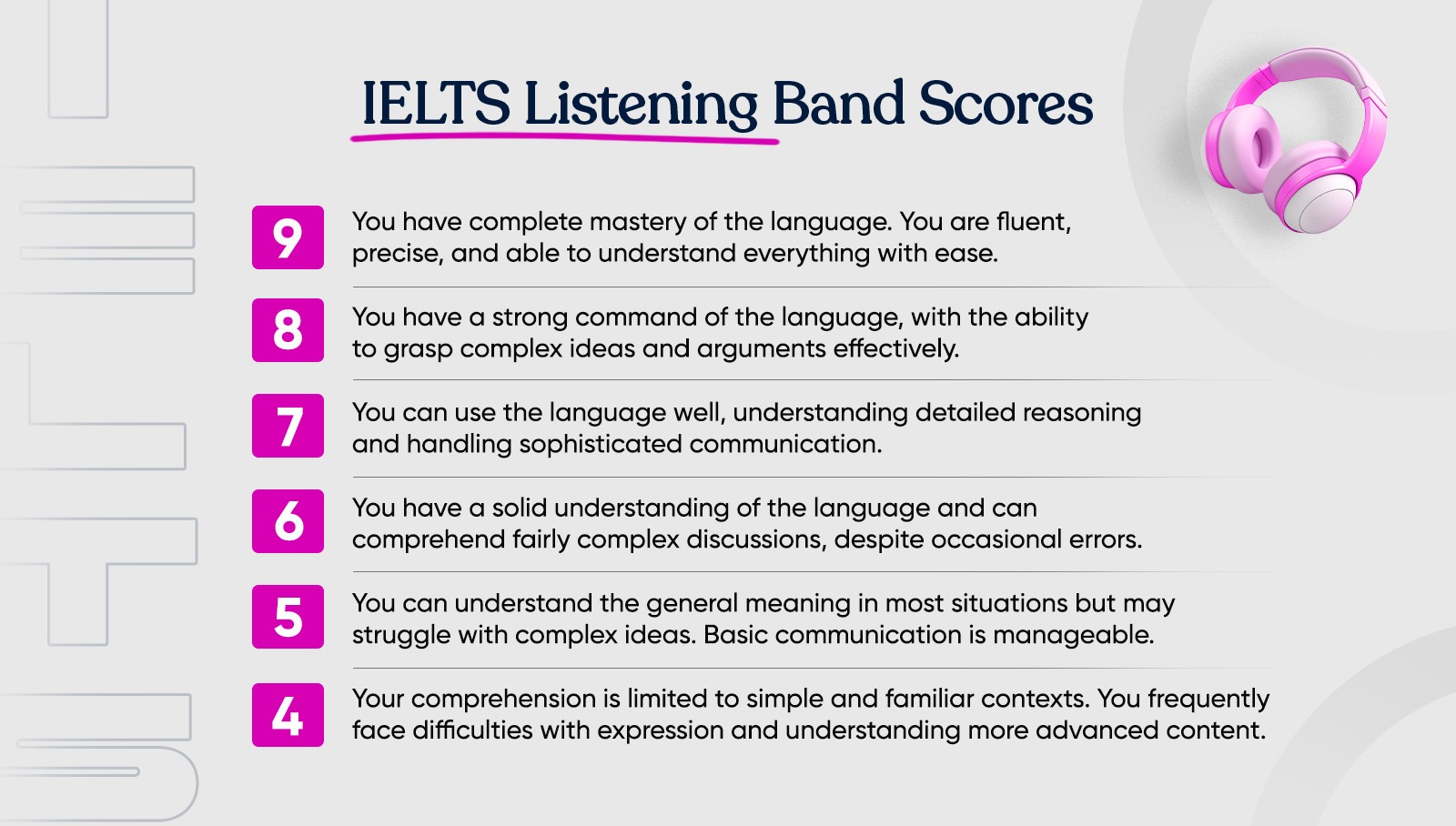IELTS LISTENING
Understanding IELTS Listening Format
The IELTS Listening test is designed to evaluate your understanding of spoken English through main ideas, detailed information, opinions, purpose and attitudes of the speakers, as well as your ability to follow the development of ideas. For both Academic and General Training applicants, it is an crucial part of the IELTS test. Your listening skills will be assessed through the four recordings and you need to answer 40 questions in 30-minute test, which is followed by later ten minutes for delivering answers.
We at Namaste Classroom offer you expert guidance, strategies, and study materials to help you ace the IELTS Listening section. Let’s go over every aspect so you can achieve your desired band score.

Understanding the IELTS Listening Format
| Aspect | Details |
|---|---|
| Duration | 30 Minutes of listening time + 10 minutes for transferring answers to the answer sheet |
| Sections | Four sections, each containing 10 questions (40 questions total). |
| Audio Content | Conversations monologues and discussions in various English. |
| You’ll hear each recording only once. | |
| Recordings increase in complexity as you progress | |
| Questions Types | Multiple Choice, Table/Note Completion, Sentence Completion, Summary Completion, Diagram/Map Labelling, Matching and short Answer Questions. |
| Scoring | Each correct answer earns 1 point; no negative marking. |
More IELTS Modules
IELTS – Reading
ELTS – Listening
IELTS – Speaking
IELTS – Writing
Download IELTS Brochure
Sample Paper
Breakdown of the Sections of IELTS Listening
| Question Number | Conversation Type | Details | |
|---|---|---|---|
| Section 1 | 1-10 | Real-Life Based Conversation | Conversation between 2 people in an everyday social context |
| Section 2 | 11-20 | Real-Life Based Monologue | A monologue set in an everyday social context |
| Section 3 | 21-30 | Academic Conversation | Discussion among 3/4 people set in educational/training context |
| Section 4 | 31-40 | Academic Conversation | Monologue related to academic |
The four sections of the IELTS listening tests are as follows:
| Section | Details | Purpose |
|---|---|---|
| Section 1 |
|
|
| Section 2 |
|
|
| Section 3 |
|
|
| Section 4 |
|
|
The four sections of the IELTS listening tests are as follows:
Increasing Difficulty
Sections progress from easier, everyday conversations to complex academic discussions.
Single Playback
Each recording is played only once, so active listening is critical.
Mixed Accents
Recordings feature British, Australian, American, and Canadian accents.
IELTS listening Question Types with Tips
| Question Type | Description | Quick Tips |
|---|---|---|
| Multiple Choice Questions | Choose the correct answer from 3-4 options. |
|
| Table/Note Completion | Fill in missing information like dates, prices, and names. |
|
| Sentence Completion | Complete sentences with words from the recording. |
|
| Summary Completion | Fill in gaps in a summary using the recording. |
|
| Labeling a Diagram/Map | Label visual displays based on the recording. |
|
| Matching Questions | Match a set of options to people, places, or topics in the recording. |
|
| Short Answer Questions | Write words, phrases, or numbers based on details from the audio. |
|
Band score for IELTS listening.
Scores range from 1 (non-user) to 9 (experienced user) on the IELTS listening band. Each right response will earn you one mark, so the total number of marks is equal to the number of questions (40). The official IELTS 9-band scale is used to convert the total marks into a band score. Keep in mind that the IELTS general listening score process and the IELTS academic listening score process are identical.

TOP TIPS TO CRACK IELTS LISTENING MODULE
- Familiarize Yourself with the Format : Practice all question types to understand their nuances. Simulate test conditions by practicing with time limits.
- Effectively Manage Your Time Before the recording begins, quickly review the questions. Highlight keywords so you know what to listen for. Make the most of the 10-minute answer transfer period by carefully reviewing your responses.
- Develop Your Paraphrasing and Vocabulary Skills Many responses use synonyms or reworded concepts. Develop a strong vocabulary to recognize paraphrases with ease.
- Spell and Write Accurately Incorrect spelling and grammar can cost marks. Write neatly and double-check your answers during the transfer time.
- Develop Active Listening Skills Focus on understanding the main idea and specific details. Pay attention to changes in tone, emphasis, and synonyms in the recording.
- Be Aware of Distractions Corrections or other material may be included in recordings. Stay alert and verify answers carefully.
- Practice Listening to Various Accents IELTS recordings include accents like British, American, Australian, and Canadian. Familiarize yourself with these by listening to podcasts, audiobooks, or news channels.
